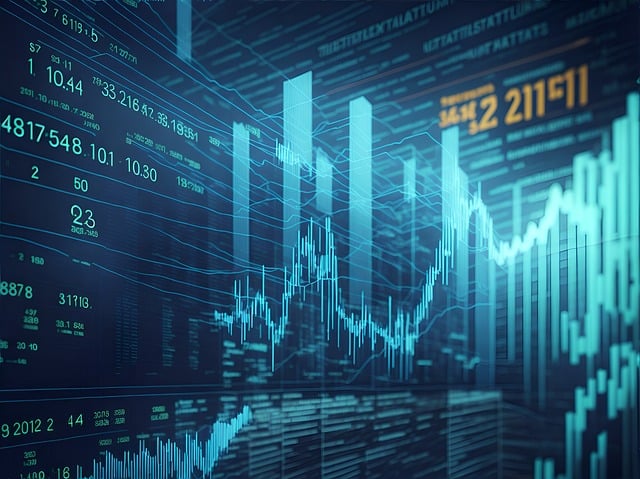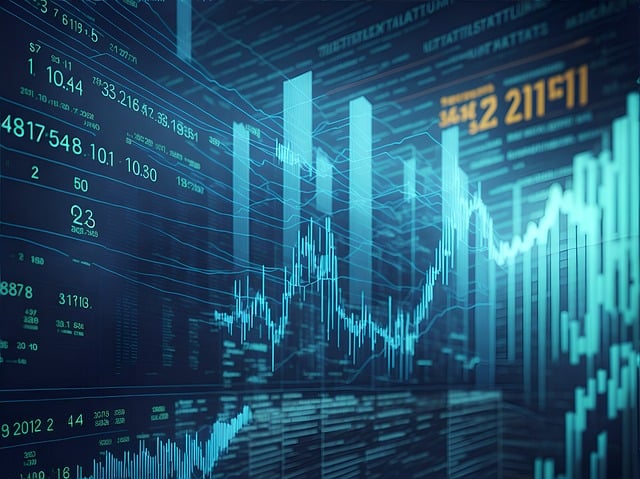Exploring the State of Crypto Trading in 2024: Challenges and Opportunities
Author: Jameson Richman Expert
Published On: 2024-11-05
Prepared by Jameson Richman and our team of experts with over a decade of experience in cryptocurrency and digital asset analysis. Learn more about us.
As we delve deeper into the year 2024, the cryptocurrency landscape continues to evolve at a rapid pace. While numerous opportunities abound within the cryptosphere, several challenges still hinder traders in the United States, especially those located in New York. This article explores critical questions concerning crypto trading in New York, trading options like PancakeSwap, futures trading, the prevalence of scams, the impact of AI on trading, and essential crypto trade tools.

Why Can't I Trade Crypto in NY?
New York has long garnered a reputation as a complex jurisdiction for cryptocurrency traders. The stringent regulatory environment has left many aspiring crypto investors wondering, “Why can’t I trade crypto in New York?” Several factors contribute to this pressing issue:
- BitLicense Requirement: The New York State Department of Financial Services (NYDFS) requires entities engaged in virtual currency activities to possess a BitLicense. This regulatory framework aims to protect consumers but creates notable barriers for both exchanges and traders.
- Limited Exchanges: Due to BitLicense requirements, many exchanges exclude New York residents from their services, limiting access to popular trading platforms. This restriction deprives traders of the opportunity to engage effectively with the crypto market.
- Compliance Concerns: Strict compliance measures necessitate the implementation of robust anti-money laundering (AML) and know-your-customer (KYC) practices, which can deter smaller or less established platforms from serving New York residents.
The implications of these regulations are profound. Many crypto enthusiasts find their options limited, which can diminish their ability to invest in an asset class that has shown significant returns over recent years.
How to Trade Crypto on PancakeSwap
PancakeSwap is a popular decentralized exchange (DEX) on the Binance Smart Chain (BSC) that allows users to trade various cryptocurrencies without intermediaries. For those looking to navigate the world of decentralized finance (DeFi), here’s a detailed guide on how to trade crypto on PancakeSwap:
Step-by-Step Guide to Using PancakeSwap
- Create a Crypto Wallet: Users must first create a wallet that supports BSC, such as MetaMask or Trust Wallet. Ensure to follow security best practices to safeguard your crypto assets.
- Fund Your Wallet: Once set up, purchase BNB (Binance Coin) or another BSC-compatible token on a centralized exchange and transfer it to your new wallet.
- Connect to PancakeSwap: Visit the PancakeSwap website and connect your wallet by clicking on the ‘Connect’ button. Follow the prompts to complete the connection.
- Select Trading Pair: Choose the tokens you want to swap by selecting them from the dropdown menus. PancakeSwap offers many popular tokens, but users can also add custom tokens using contract addresses.
- Set Slippage Tolerance: Set your slippage tolerance to address price fluctuations during the transaction. Typically, a range of 1-5% is advisable but can be adjusted based on market conditions.
- Execute the Swap: Review the details of your transaction and click the ‘Swap’ button. Confirm the swap in your wallet to complete the transaction.
As with any trading platform, users should be aware of the risks associated with trading on DEXs, such as impermanent loss and the potential for smart contract vulnerabilities.
Can I Trade Crypto Futures in the US?
Trading crypto futures has gained immense popularity, allowing traders to speculate on the future price of cryptocurrencies without actually owning the underlying assets. However, many U.S. residents ponder, “Can I trade crypto futures in the U.S.?” The answer is nuanced:
- Availability of Platforms: Several U.S.-based platforms, such as BitMEX and Binance US, do offer crypto futures trading. However, access may differ based on state regulations.
- Regulatory Oversights: The Commodity Futures Trading Commission (CFTC) regulates futures trading in the U.S., and traders must ensure that they are engaging with compliant exchanges.
- Risk Awareness: Futures trading offers the potential for high returns but comes with significant risks, including the danger of margin calls and liquidation. Educating oneself about these risks is essential for prospective traders.
In light of this, traders must research their chosen platforms to ensure that they comply with U.S. regulations while aware of the risks involved in futures trading.

Crypto Trader Scam: How to Protect Yourself
The burgeoning popularity of cryptocurrencies has led to an alarming rise in scams targeting unsuspecting traders. As we navigate 2024, increased vigilance is essential to protect oneself from falling prey to scams. Below are common scams and protective measures:
Common Types of Crypto Scams
- Ponzi Schemes: Unscrupulous individuals lure investors with promises of high returns, paying out earlier investors with the capital from new investors rather than legitimate profit.
- Phishing Attacks: Scammers utilize fake websites or emails that mimic legitimate exchanges to steal sensitive information like private keys or account credentials.
- Pump and Dump Schemes: Coordinated efforts to inflate the price of a low-volume cryptocurrency via false hype, only to sell off at the peak, leaving other investors with depreciated assets.
How to Protect Yourself
Being informed is your best defense against crypto scams. Here are proactive steps for safeguarding your investments:
- Conduct Thorough Research: Always investigate new projects, check for legitimate partnerships, and read user reviews before investing.
- Use Two-Factor Authentication: Secure your accounts by enabling 2FA on any crypto exchange or wallet service.
- Beware of Unrealistic Promises: If it sounds too good to be true, it likely is. Exercise caution with offers that guarantee high returns with minimal risk.
AI to Trade Crypto: The Future of Trading?
The integration of artificial intelligence in various sectors is revolutionizing the way we approach trading in the crypto market. In 2024, many traders are curious about the role AI can play in optimizing trading strategies.
Benefits of Using AI for Crypto Trading
- Data Analysis: AI algorithms can analyze vast amounts of data in a fraction of the time it would take a human, identifying patterns that can inform trading decisions.
- Emotionless Trading: AI operates devoid of emotional interference, executing trades based purely on data and predetermined strategies, thus potentially leading to better trading outcomes.
- Automated Trading: With AI, traders can set parameters for buying or selling cryptocurrencies automatically, removing the need for constant monitoring.
While there are substantial advantages to utilizing AI in crypto trading, it is critical to understand that AI is not infallible. Backtesting strategies and continuously monitoring performance remain crucial to success.
Crypto Trade Tools: Essential Resources for Success
As the cryptocurrency market continues to expand, traders need reliable tools to streamline their trading processes. Below are some essential crypto trade tools to consider in 2024:
Top Tools for Crypto Trading
- Price Tracking Apps: Tools like Blockfolio and CoinMarketCap provide real-time price updates and portfolio tracking to help traders stay informed.
- Portfolio Management Software: Using applications such as Delta or Shrimpy can help you effectively manage your crypto investments across multiple exchanges.
- Technical Analysis Tools: Charting platforms like TradingView offer comprehensive technical analysis features, allowing traders to make informed decisions based on market trends.
Conclusion: Navigating the Crypto Landscape in 2024
As we journey through 2024, the crypto trading landscape presents both opportunities and challenges. Understanding regulatory constraints, effectively utilizing decentralized platforms like PancakeSwap, safeguarding against scams, harnessing artificial intelligence, and utilizing essential trading tools will empower traders. While navigating this complex environment may seem daunting, informed strategies can enhance your trading experience and open the door to new possibilities in the world of cryptocurrency.
In my opinion, the evolution of crypto trading in North America highlights the need for balanced regulations that protect consumers without stifling innovation. Encouraging open dialogue between regulators and the crypto community will lead to a more prosperous and secure trading environment.